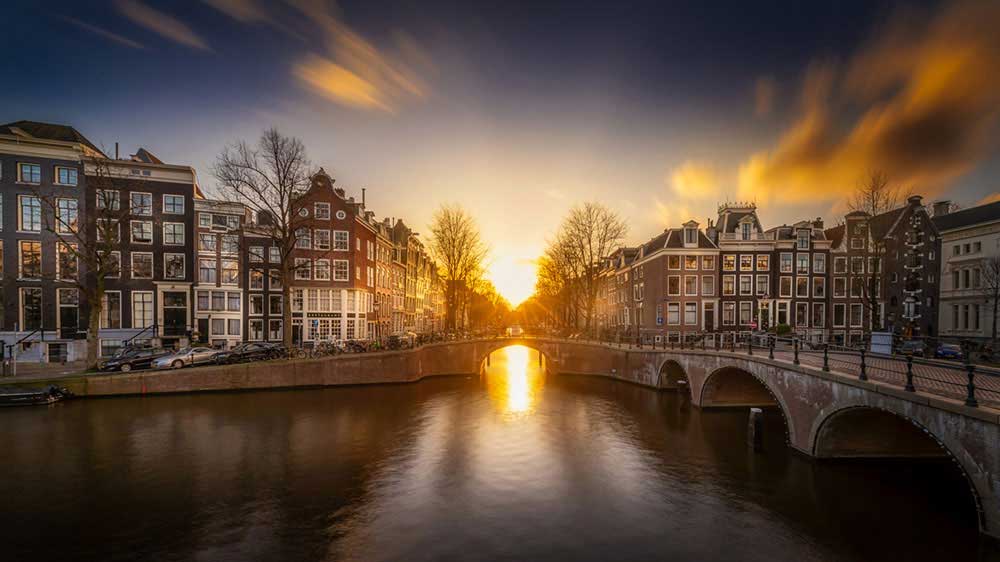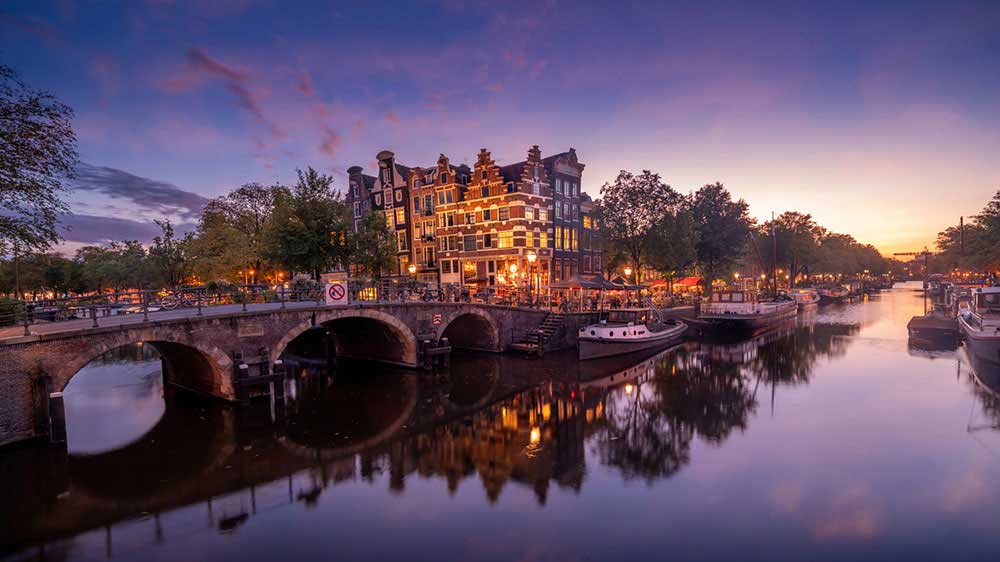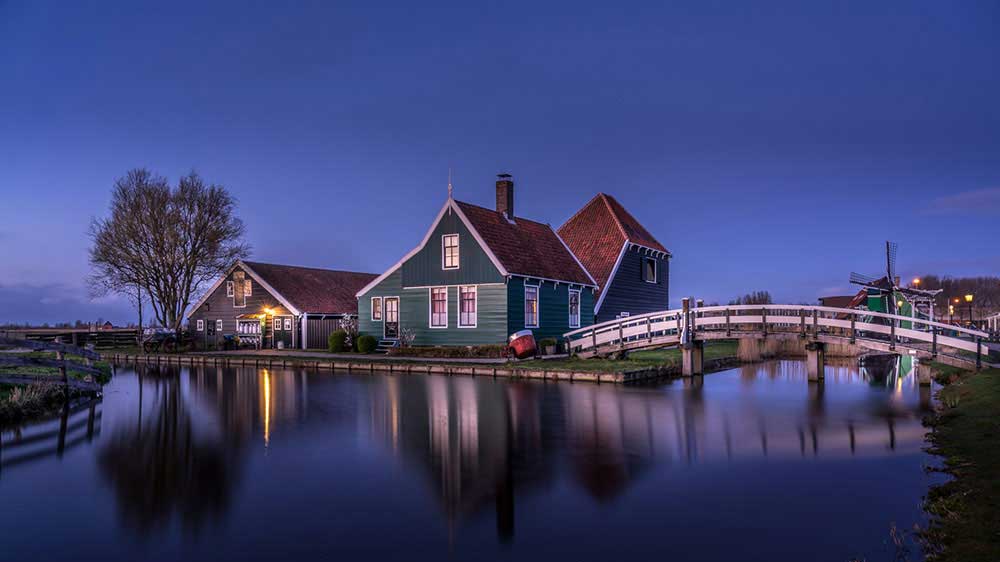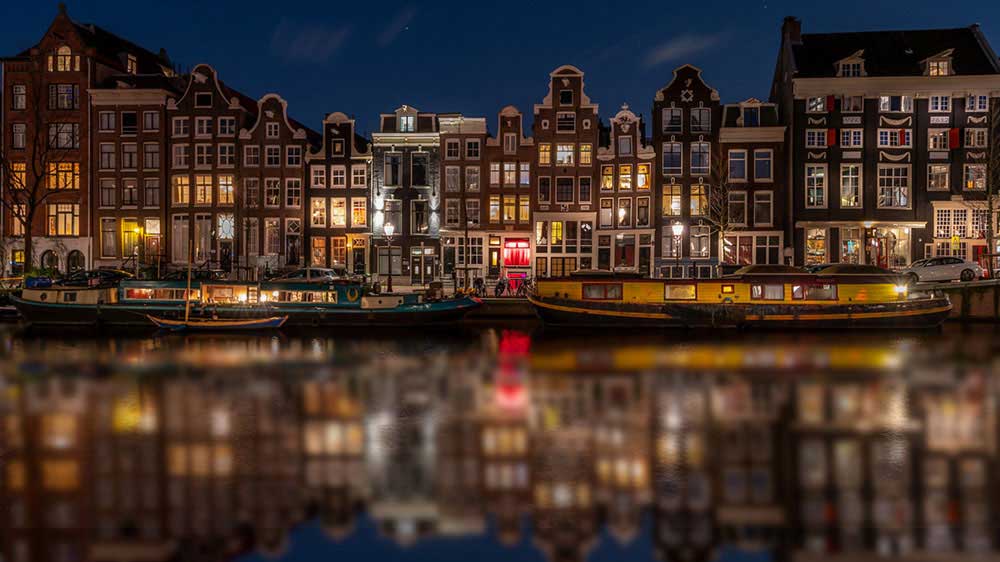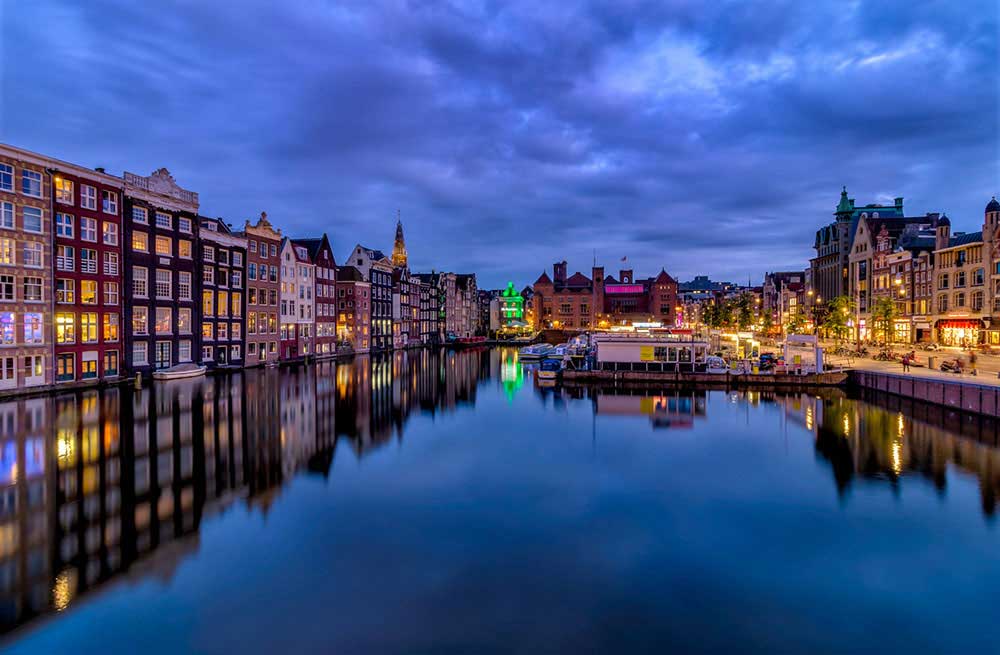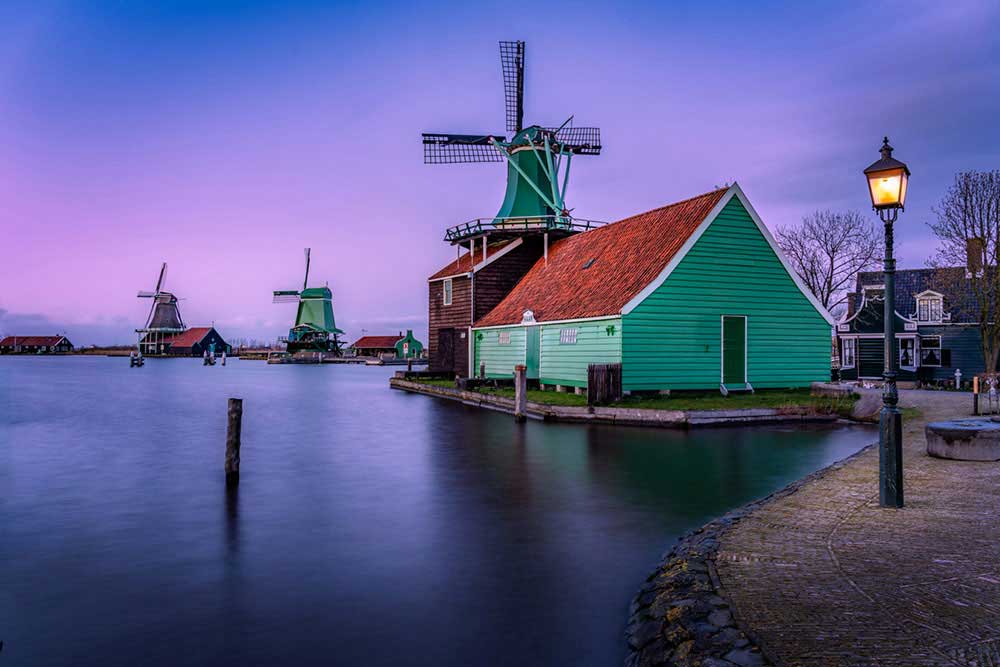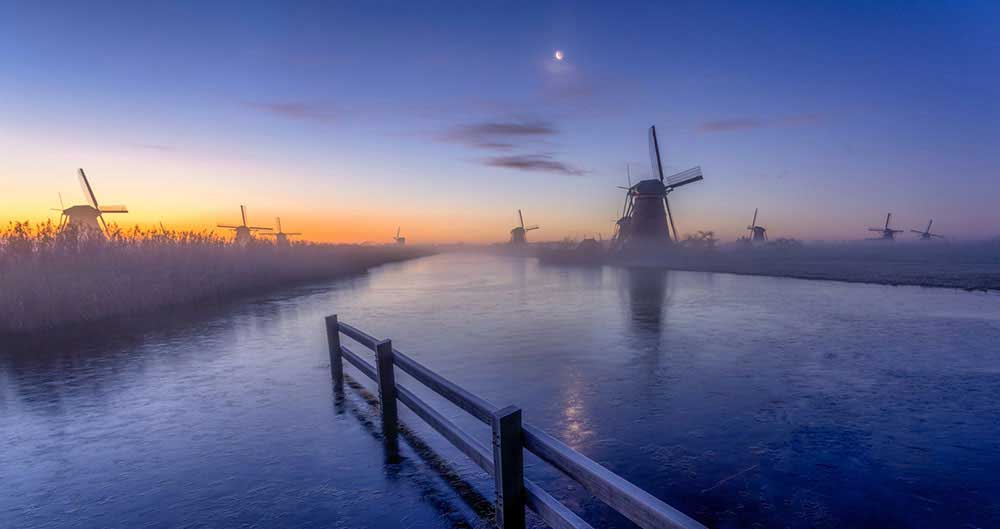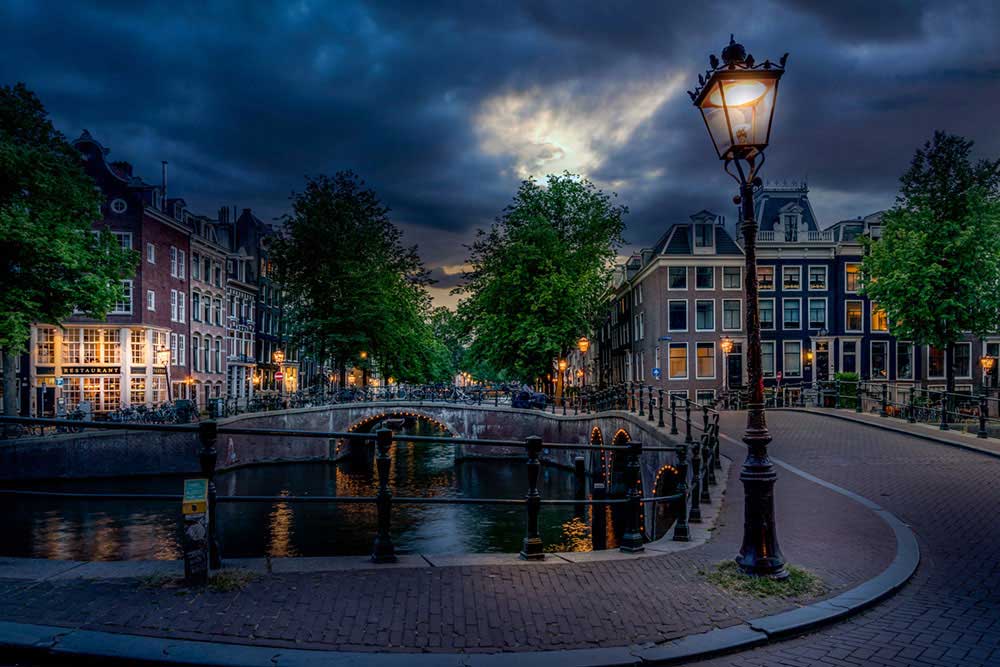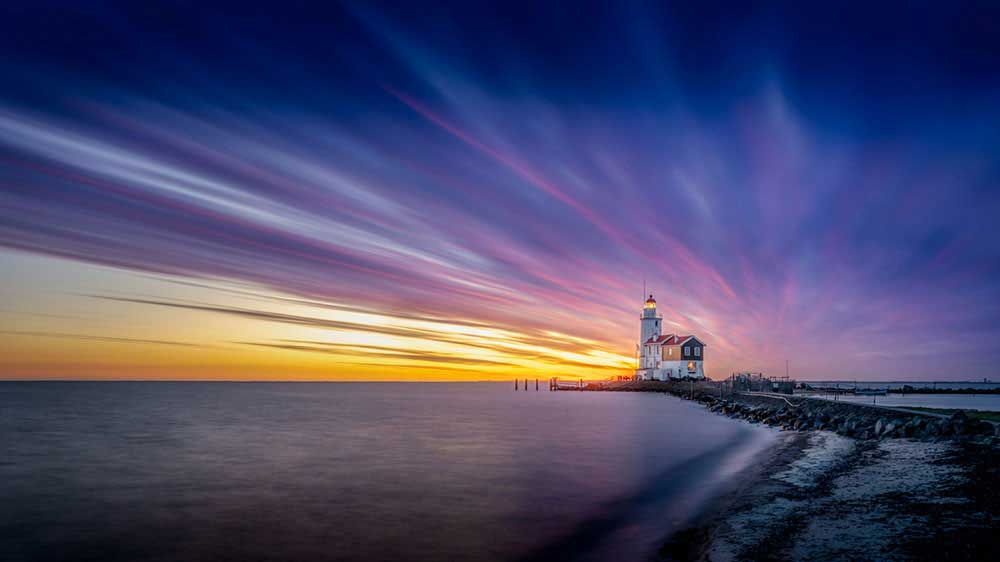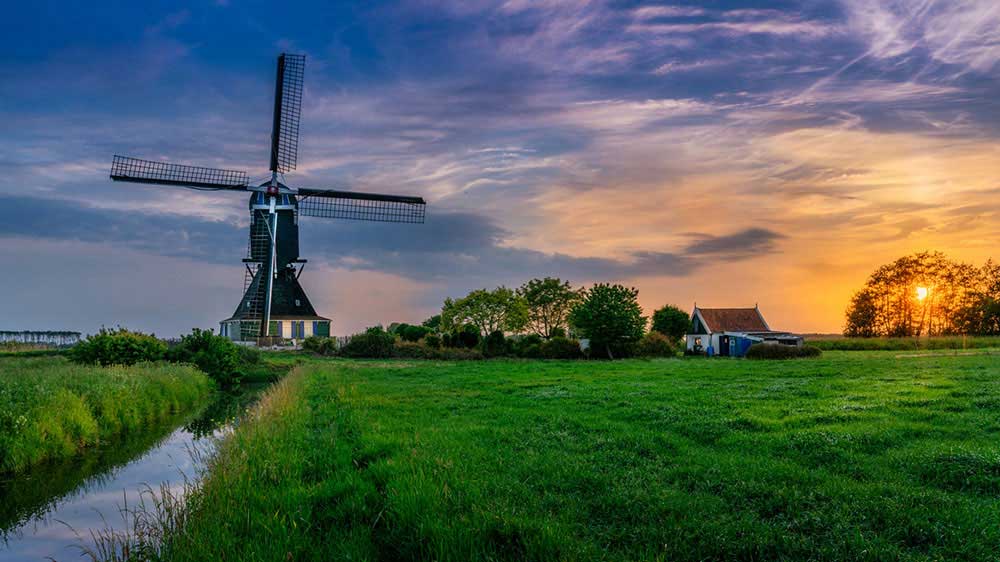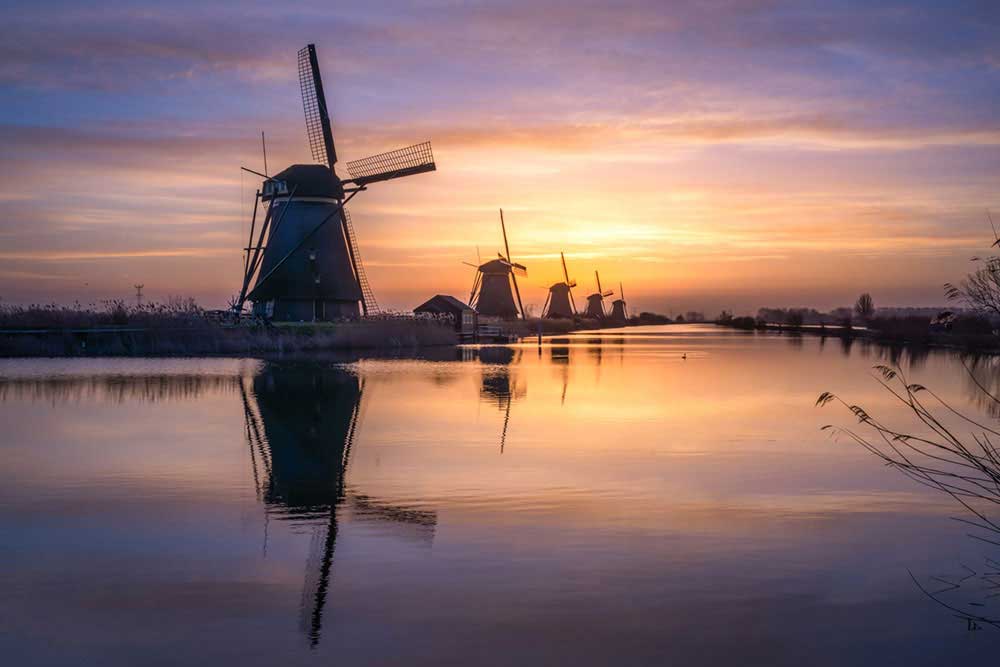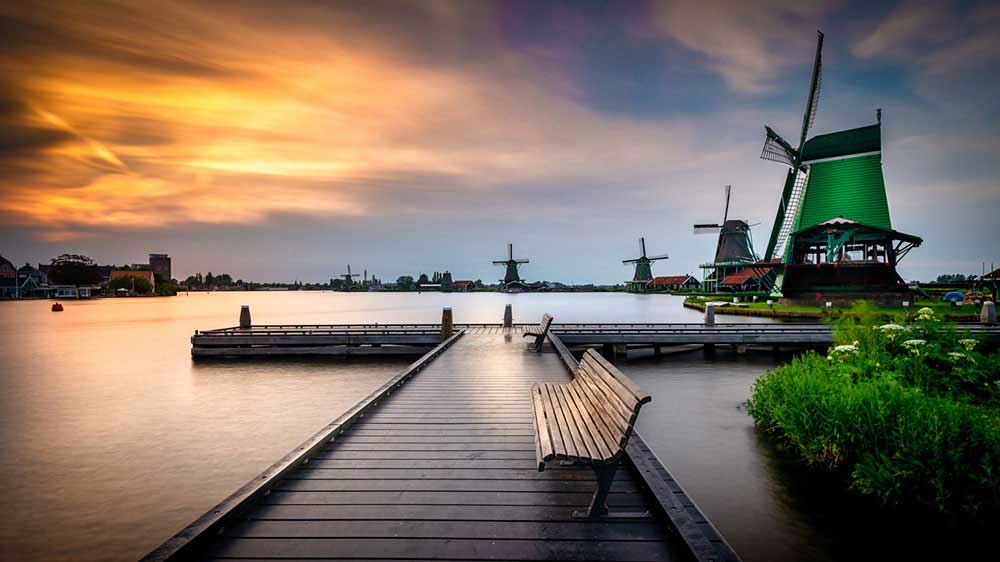With Covid-19 dictating large parts of the world and restricting traveling, I wanted to create a series about some of the great parts of the Netherlands. The general idea being: If it is not possible to travel to the Netherlands and enjoy some of the highlights of our country, I want to bring some of the highlights of the Netherlands to the world.
Of course, we have several great places in the Netherland so I decided to make a selection of well known highlights such as our capital Amsterdam, the city where our government resides – the Hague and of course well known places with our famous windmills, Kinderdijk and Zaanse Schans, but I also wanted to show some less known hidden gems.
One of the famous parts of Amsterdam are its canals. On specific parts of the year the sun sets at the end of Leidsegracht giving the illusion as if the sun sets in the water of the canal. On the Brouwersgracht the houses at the end of the bridge over the canals seem to be very crooked, but that is the way they are. In Amsterdam the houses are built on top of sandy soil on wooden beams. In the many many years the buildings are already standing, the beams are sinking a little into the ground, tilting the buildings. Another reason why the buildings are crooked is because Amsterdam has always been an expensive city to live in and since you had to pay by the square meter of ground the house was built on, the clever Dutch people started to built the house a little bit wider towards the top, creating a little bit more space without having to pay for it by the square meter of ground that the building was built upon.
Another way to cut back on the housing costs is by living on house boats such as the famous ones at the Singel in Amsterdam.
In The Hague, where the Dutch government has its seat, the grandeur of the castle goes back to the 13th century. It originally was the residence of the courts of Holland and became the centre of Dutch politics around 1584 and is currently still in use, making it one of the oldest Parliament buildings in the world still being used.
Last but not least the famous Dutch windmills. Two famous locations come to mind: Kinderdijk and Zaanse Schans. At Kinderdijk, a UNESCO World Heritage site, you’ll find 19 windmills, built around 1740 in order drain the polder. Unlike Kinderdijk, Zaanse Schans was more or less created. Between 1961 and 1974 old, typical Dutch buildings were relocated to Zaanse Schans in order to preserve them.
However in the Netherlands you can find windmills everywhere, e.g. the Post mill, which is located in the center of the Netherlands near the small town of Herwijnen. If you are still in for some marvelous spots and you have the time to get there very early at sunrise, do visit the Paard of Marken, a lighthouse on the Marken peninsula on the IJsselmeer. It first started as a square lighthouse in 1700 and got its current form in 1839. With some luck you’ll get a great sunrise.
About Rene Siebring
I am a high-end interior and architectural photographer, specializing in residential and commercial interiors and exteriors. I like to bring out the best of the interior in my photos, so that the person who sees the photo wants to be there on the spot. I also enjoy photographing cityscapes and landscapes.
I love capturing beautiful buildings, especially with the warm light during sunrise and sunset. While photographing I pay a lot of attention to detail which results in precise and true to life images of the interiors/exteriors that I capture with my photography.
In 2017 after a career of over 20 years as a project manager, I put a stop to this career. I had been running all kinds of larger projects and the work was starting to get repetitive. I foresaw that continuing to run projects for another 20 years until retirement was not going to produce the winning numbers for me. Time for something else.
I then decided to turn my hobby into my profession and become a professional photographer. I did courses with renowned photographers such as Albert Dros, Daniel Cheong and Serge Ramelli and successfully completed the Serge Ramelli Institute of Photography being the first one to graduate. All this knowledge I have put into practice and developed into my own style.
I have always enjoyed sharing my knowledge. That’s why I have recently started to put tutorials on my website and YouTube channel in which I explain the working of photography and post processing programs. I am 50, married and have two wonderful kids. I graduated at the University of Nijmegen in Business Administration and in Business Communications. Owner of Siebring Photo Art. [Official Website]



